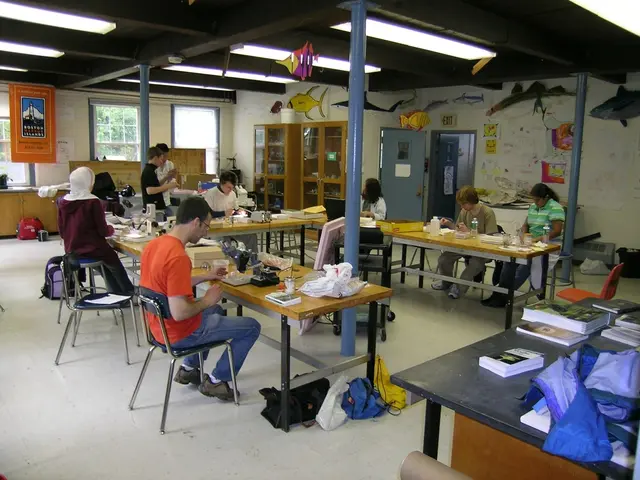Schools might explore an innovative strategy regarding the issue of overheating, as suggested by the Commission.
As Germany braces for its hottest day of the summer so far, with temperatures predicted to reach up to 40 degrees Celsius, the need for heat protection measures in schools has become a pressing concern. Despite a growing awareness of the health risks posed by extreme heat, there are currently no nationwide standardized regulations specifically mandating heat protection measures in schools.
Climate change has led to an increase in extreme heat days in Germany, with temperatures doubling compared to scenarios without climate change influence. In response, a broad alliance of healthcare and environmental organizations, including research institutions and governmental bodies, are actively promoting awareness of heat-related health risks and preventive measures, focusing especially on vulnerable groups such as children and the elderly.
In the absence of uniform federal legislation, best practices for heat protection in schools are being implemented on a regional or institutional level. These practices include adjusting school schedules to shift outdoor activities and physical education to cooler parts of the day, ensuring adequate hydration by providing access to drinking water and encouraging regular water intake among students, and physical environment adaptations such as using shade structures, improving ventilation, and applying heat-reflective window films.
Education and training are also crucial components of heat protection strategies. School staff and students should be informed about recognizing heat-related illnesses and appropriate responses, and emergency preparedness measures such as heat illness management protocols and loosening dress codes during heat waves should be in place.
Some federal states and municipalities have begun integrating these best practices into their school guidelines, but a uniform federal legislation or mandate that standardizes heat protection measures across all schools nationwide is still developing.
Given the increasing number of extreme heat events and growing public health focus, there is momentum toward developing evidence-based heat action plans and potentially standardized regulations for institutions including schools. Collaborative efforts involving scientific institutions, health organizations, and government bodies aim to translate research into concrete recommendations and policies.
Education unions in Germany are advocating for standardized heat protection measures in schools. Anja Bensinger-Stolze, board member of the Education and Science Union (GEW), emphasized the need for uniform regulations for occupational and health safety for students and employees at schools. Bensinger-Stolze suggested modernizing schools with ground cooling and sun sails. Comprehensive first aid training and safety training on handling heat are also required, according to Bensinger-Stolze.
Gerhard Brand, head of the Association of Education and Education (VBE), believes school carriers should equip existing school buildings to allow learning at high outdoor temperatures. However, the VBE has not yet proposed specific heat protection regulations.
As the heat wave continues, the demand for heat protection regulations in schools is growing. The Association of Education and Education (VBE) is discussing the possibility of using out-of-school learning locations more often during hot seasons, but it is unclear whether these locations would be heat-free. A comprehensive supply of free drinking water for all children, young people, and employees is necessary, according to Bensinger-Stolze, but it is not yet clear whether this will be included in any proposed regulations.
In conclusion, while Germany recognizes the rising threat of heat and promotes awareness through national initiatives, standardized, nationwide heat protection regulations for schools are still developing and are largely implemented as best practices on regional or institutional levels rather than through formal nationwide mandates. The demand for more comprehensive and standardized heat protection measures in schools is growing, with education unions and organizations advocating for evidence-based heat action plans and potentially standardized regulations.
- The need for education and self-development, particularly on heat-related health risks and preventive measures, has emerged as crucial in the context of extreme heat events in Germany.
- The policy and legislation surrounding heat protection measures in schools remains inconsistent, with intervention primarily happening on a regional or institutional level.
- Learning about heat illness management protocols and safety training on handling heat are important components of comprehensive heat protection strategies proposed by education unions in Germany, aiming to create uniform regulations for occupational and health safety in schools.








